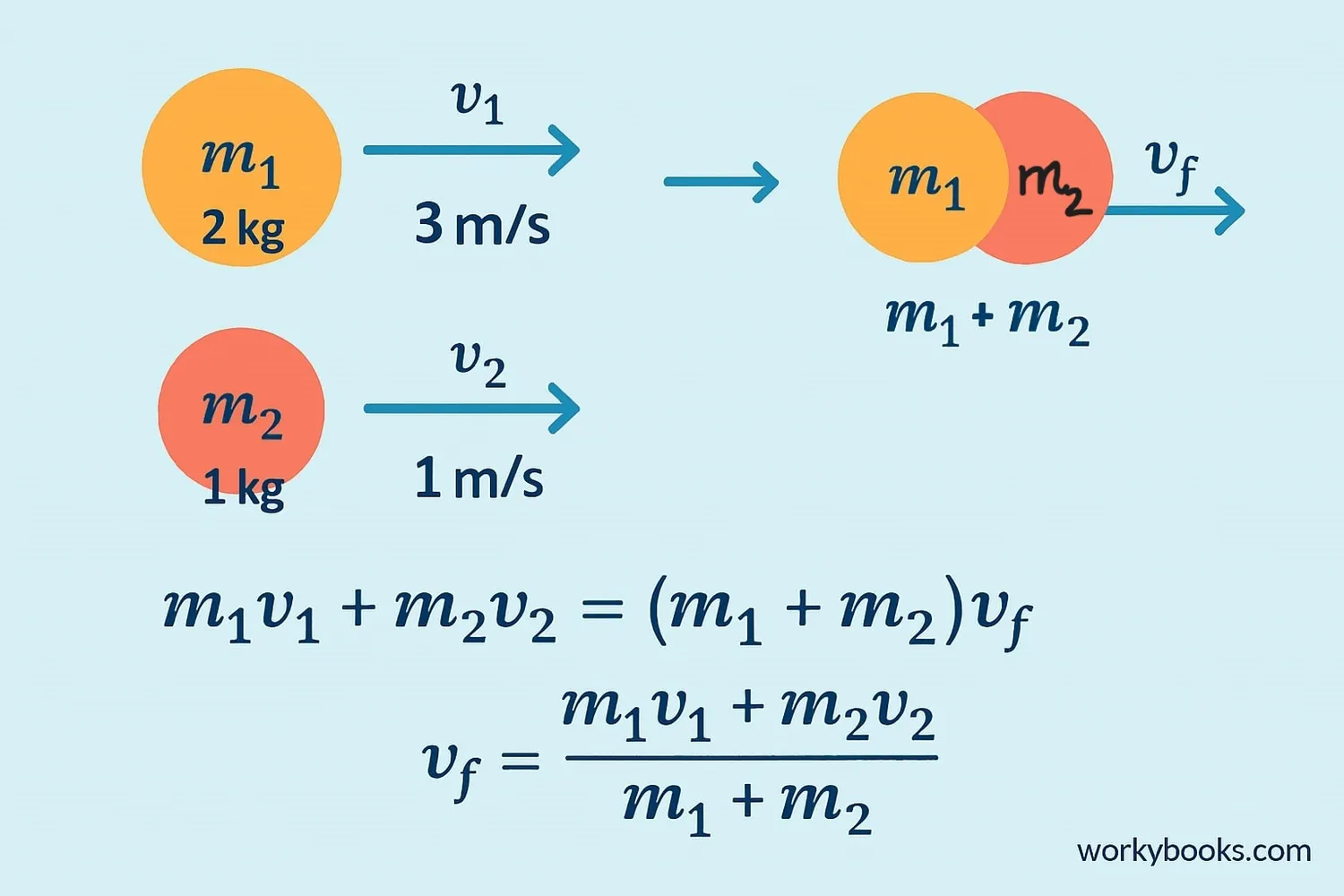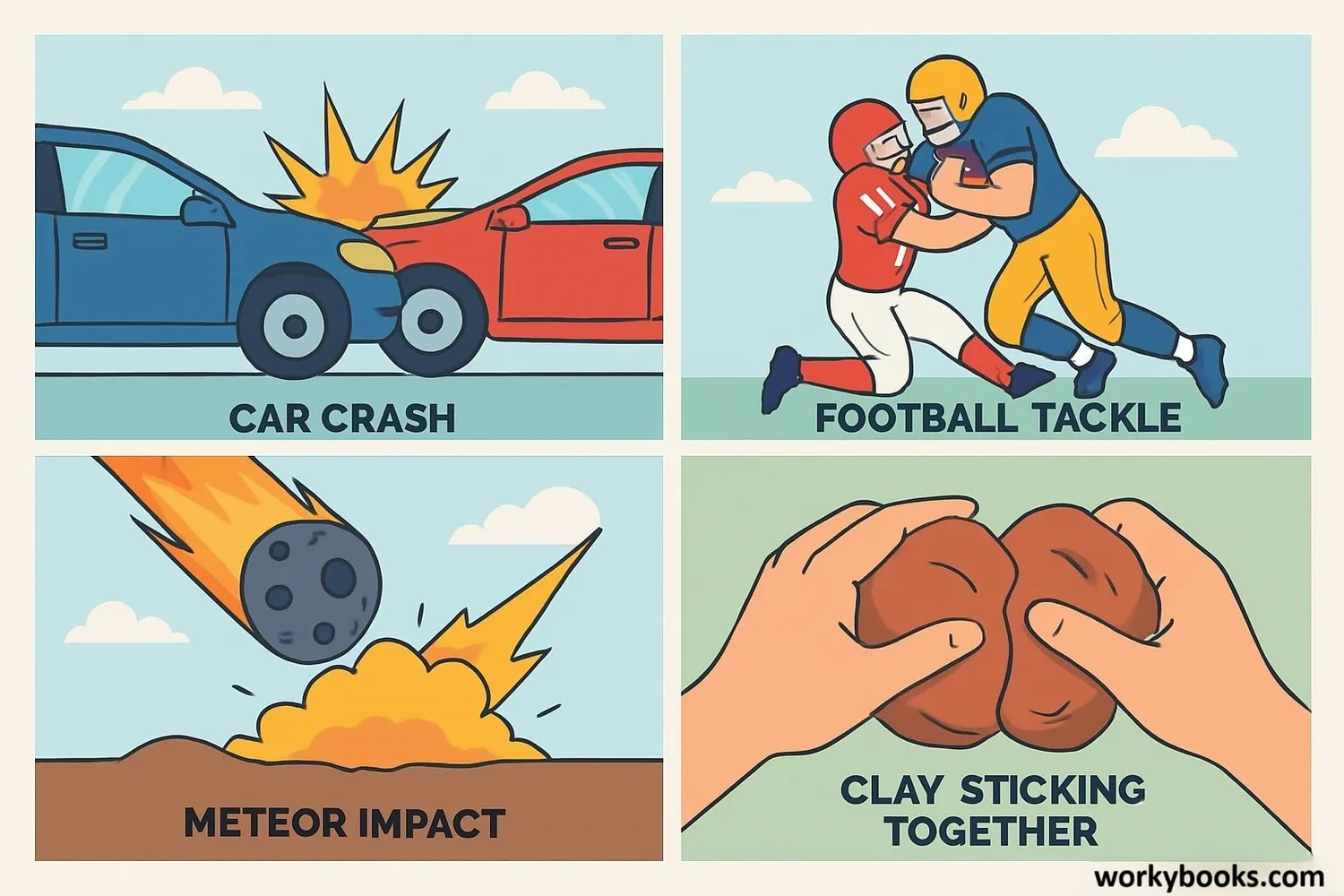Inelastic Collisions - Definition, Examples, Quiz, FAQ, Trivia
Discover how objects collide and stick together in physics!
What is Inelastic Collision?

An inelastic collision happens when two objects collide and stick together, moving as one object after the collision. Unlike bouncy collisions where objects bounce apart, inelastic collisions involve objects that don't separate after impact.
The key thing to remember is that while momentum is conserved (total momentum before collision equals total momentum after), kinetic energy is not conserved. Some energy transforms into other forms like heat, sound, or deformation energy.
Physics Fact!
In perfectly inelastic collisions, objects stick together and move with the same velocity after collision. This is when the maximum kinetic energy is lost.
How Inelastic Collisions Work

Inelastic collisions follow the law of conservation of momentum. This means that the total momentum before the collision equals the total momentum after the collision, even though kinetic energy is lost.
Momentum Before
Calculate total momentum: mass₁ × velocity₁ + mass₂ × velocity₂
Collision
Objects collide and stick together
Momentum After
Total momentum remains the same: (mass₁ + mass₂) × final velocity
Energy Change
Kinetic energy decreases, transforms to other forms
Energy Transformation
The "lost" kinetic energy isn't really gone - it transforms into other types of energy like heat, sound, or deformation of the objects.
Types of Collisions

There are three main types of collisions in physics:
Elastic Collisions
• Objects bounce apart after collision
• Both momentum and kinetic energy are conserved
• Example: Billiard balls colliding
Inelastic Collisions
• Objects may separate but lose kinetic energy
• Momentum conserved, kinetic energy not conserved
• Example: Car crash with some bouncing
Perfectly Inelastic
• Objects stick together after collision
• Momentum conserved, maximum kinetic energy loss
• Example: Two lumps of clay colliding
Key Difference
The main difference between elastic and inelastic collisions is what gets conserved: in elastic collisions both momentum and kinetic energy are conserved, while in inelastic collisions only momentum is conserved.
Real-World Examples

Inelastic collisions happen all around us. Here are some common examples:
Car Accidents
When cars collide and crumple, they lose kinetic energy to deformation and heat
Sports Tackles
Football players colliding and falling together
Meteor Impacts
Meteors hitting planets and becoming part of them
Dough Mixing
Ingredients colliding and sticking together in mixing bowls
Safety Applications
Understanding inelastic collisions helps engineers design safer cars with crumple zones that absorb collision energy, protecting passengers.
Inelastic Collision Quiz
Test your knowledge with this fun quiz! Answer all 5 questions to see how much you've learned.
Frequently Asked Questions
Here are answers to some common questions about inelastic collisions:
Fun Physics Trivia
Discover some amazing facts about collisions and physics!
Space Collisions
NASA studies inelastic collisions to design spacecraft that can dock with space stations. The docking process is a controlled perfectly inelastic collision!
Sports Physics
In American football, tackles are examples of inelastic collisions. The players often fall together after impact, demonstrating conservation of momentum.
Bug Collisions
When insects collide with car windshields, it's an extremely inelastic collision. The bug essentially "sticks" to the windshield, transferring all its momentum to the car.
Safety Engineering
Modern cars are designed with crumple zones that intentionally create inelastic collisions. By deforming, these zones absorb energy and increase collision time, reducing force on passengers.


